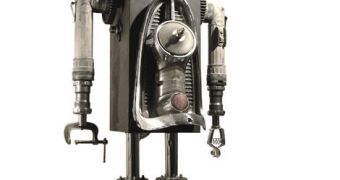The science of robotics is currently struggling to cope with one of the most difficult challenges it has come across, and namely making robots recognize their surroundings when they return from missions, if the area is changed. Moving vehicles, parked cars, repainted buildings, they are all obstacles for a robot to realize that it's been there before. If the mechanical creature is to be used for making maps of the most difficult-to-reach terrains, then it must recognize the places it's been to, otherwise it will generate a really large and redundant map.
The only method of navigation compiled thus far for such robots has been for them to plot a course and navigate it, cross-referencing their position via satellite GPS to an onboard map. But the main issue is that some of them will not have at their disposal the luxury of a map, but will have to make one for themselves. So, the question is how do you make a robot that can recognize moving landscapes, when that can be difficult even for people, at times?
The fact that we can do it in the blink of an eye should not, for a second, mislead us into believing that this is a simple process, especially for a machine whose every thought is a line of code. Comparing the number of connections in the human brain with those in a robot's is like comparing a lake with an ocean.
Now, researchers at the University of Oxford believe they may have found a way of allowing machines to recognize familiar places they've been to, even if they approach them from different angles, during the night or during the day, or even if the buildings' facades have changed. The FabMap software is a relatively simple contraption that basically acts like a vocabulary.
Every two seconds, thousands of individual words, which can be likened to tags on blogs and websites, pass through the “mind” of the machine. Over one minute, for example, the amount of data it processes is amazing. The team, made up of robotics experts Mark Cummins and Paul Newman, have told New Scientist that their invention also has the potential to arrange various related words into “bags”. To illustrate this, they give as example the word “bicycle,” which is a bag that contains such phrases as “bicycle seat,” “bicycle wheel,” or “bicycle chain.”
“A handful of researchers have been active in the area of vision-based mapping for [most] of the last decade, and [this] work stands out as a sound marriage of theoretical principles and practical engineering,” Microsoft applied researcher Robert Sim says by showing his appreciation.

 14 DAY TRIAL //
14 DAY TRIAL //